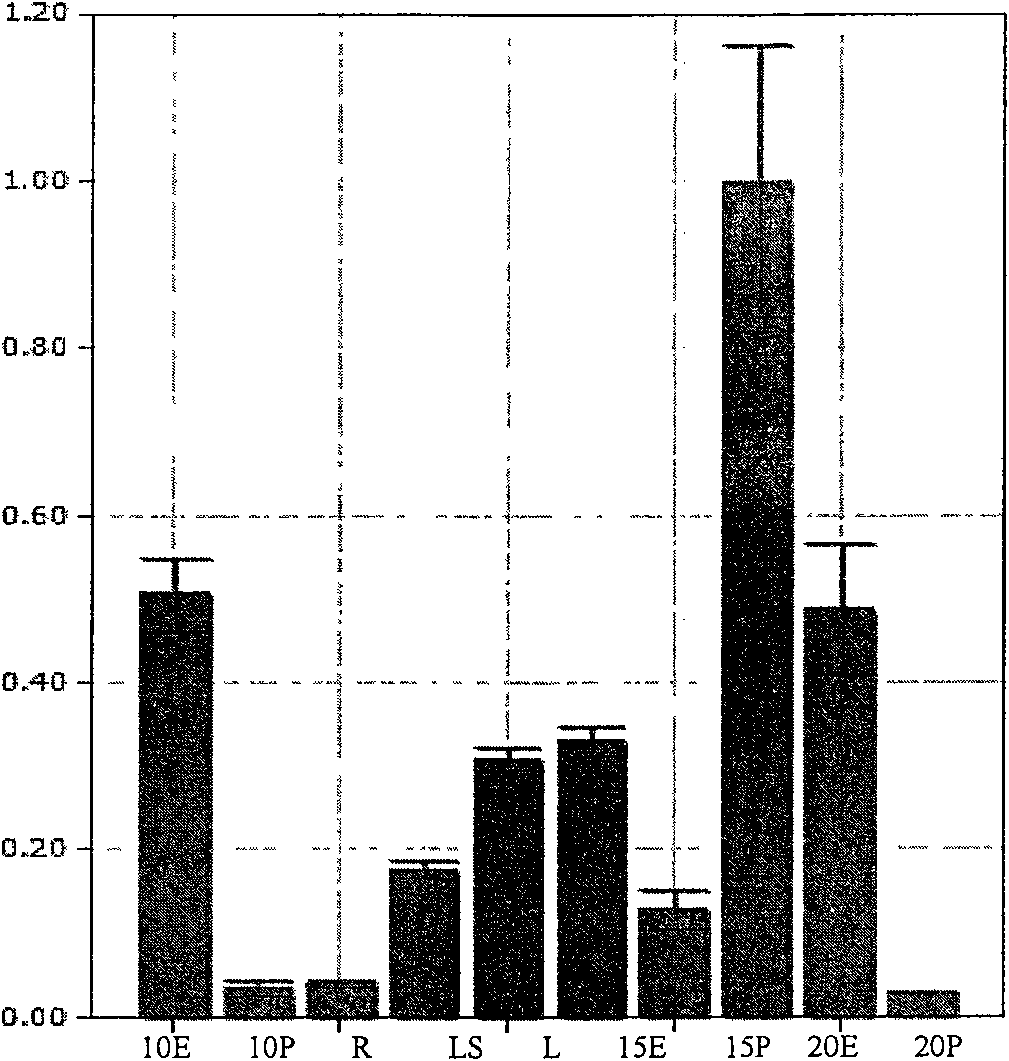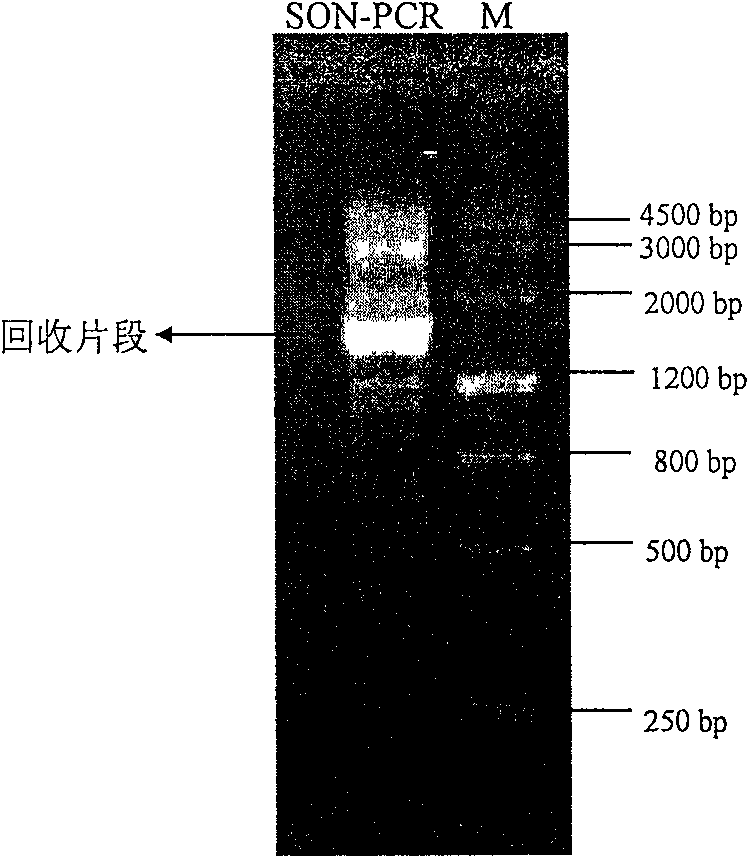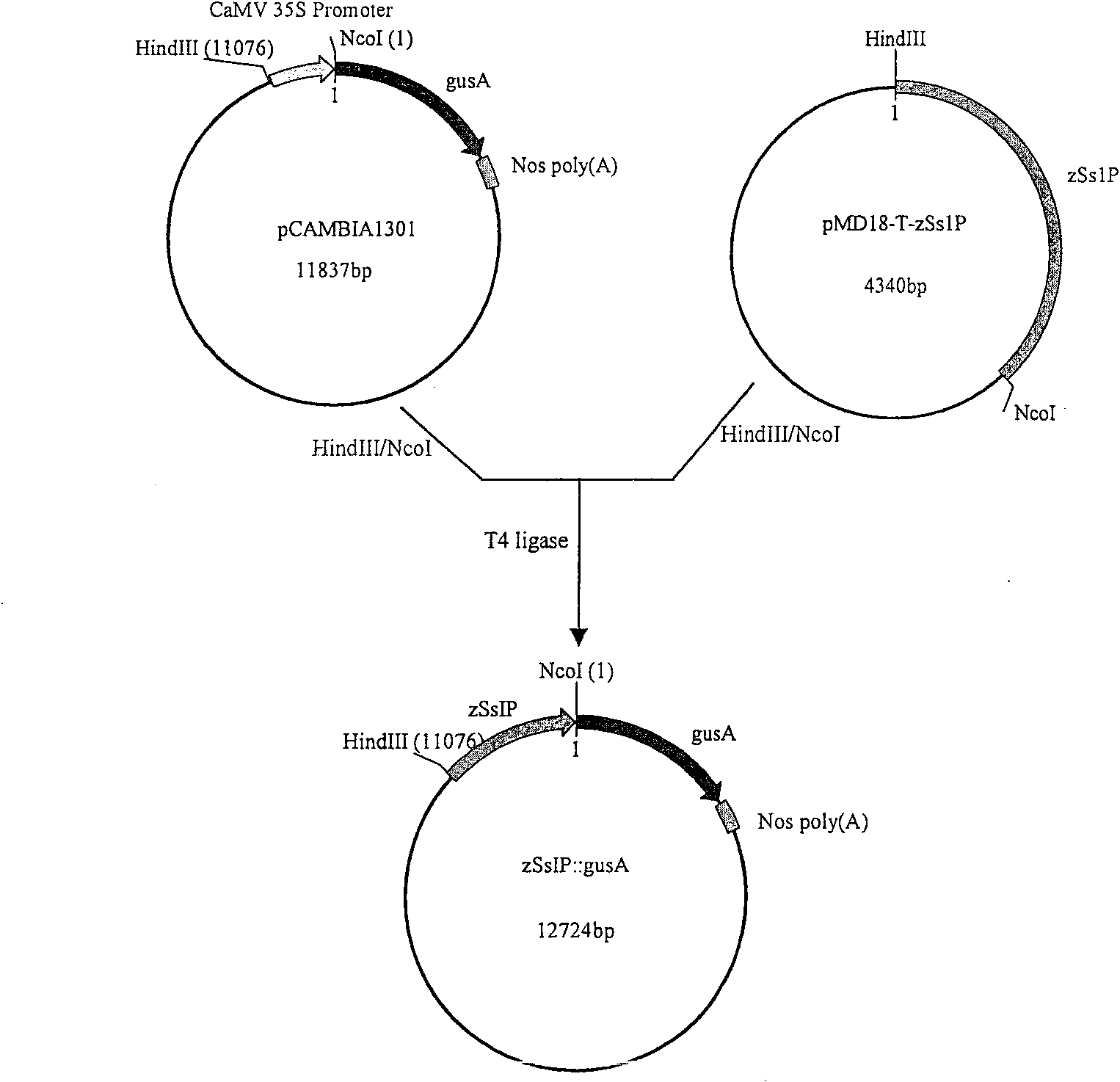Vegetable starch synthetase genetic promoter and use thereof
A technology of starch synthase and promoter, applied in the direction of plant gene improvement, application, genetic engineering, etc., can solve the problems of unsatisfactory strength and time
- Summary
- Abstract
- Description
- Claims
- Application Information
AI Technical Summary
Problems solved by technology
Method used
Image
Examples
Embodiment 1
[0110] Example 1: Analysis of the expression site of the maize zSs1 gene
[0111] 1. Extraction of total RNA from different tissues in different periods of maize
[0112] Take 50-100 mg of tissue fresh or stored at -70°C in liquid nitrogen, grind it with liquid nitrogen, put it in a 1.5 mL centrifuge tube, add 1 mL of Trizol (purchased from Invitrogen) to fully shake, and let it stand at room temperature for 5 min. Add 0.2mL chloroform, shake for 15sec, and let stand for 2min. Centrifuge at 12000r / min at 4°C for 15min, and take the supernatant. Add an equal volume of ethylene glycol butyl ether, mix the liquid in the tube gently, and let it stand in an ice bath for 1h. Centrifuge at 10000r / min at 4°C for 10min, and discard the supernatant. Add 1 mL of 75% ethanol and gently wash the pellet. Centrifuge at 7500r / min at 4°C for 5min, and discard the supernatant. Add 1 mL of 100% ethanol and gently wash the pellet. Centrifuge at 7500r / min at 4°C for 5min, discard the superna...
Embodiment 2
[0143] Cloning of embodiment 2, zSs1 gene 5' flanking sequence
[0144] 1. Extraction of maize genomic DNA.
[0145] Weigh 1.0 g of fresh corn leaves, cut them into 1 cm pieces, place them in a pre-cooled mortar, grind them into a uniform powder quickly with liquid nitrogen, and put all the powders into a 5 mL centrifuge tube before the tissue is dissolved. Quickly add 2mL of CTAB extraction buffer incubated at 65°C to the centrifuge tube, shake gently to mix, then bathe in water at 65°C for 30min-1h, add an equal volume of chloroform:isoamyl alcohol (24:1), mix well, gently Shake for 15 minutes. Centrifuge at 10000r / min for 8min at room temperature. Pipette the supernatant into a clean 5 mL centrifuge tube. Add an equal volume of pre-cooled isopropanol (4° C.), and centrifuge at 10,000 r / min for 5 min at room temperature. Discard the supernatant, wash the pellet twice with 75% ethanol and once with absolute ethanol. Dry in a vacuum desiccator for 10 min, dissolve DNA wit...
Embodiment 3
[0197] Embodiment 3, the application of starch synthase gene promoter in plant bioreactor
[0198] 1. Construction of plant expression vectors:
[0199] According to the sequence of SEQ ID No: 1, design and synthesize promoter primers containing restriction enzyme sites, and use the 1.6Kb sequence connected to the sequencing vector pMD18-T as a template to clone the 1.6Kb zSs1 gene promoter by PCR amplification method subsequence.
[0200] Pse1: 5'---CCAAGCTTTTGATGTTCTTTTTTTGTGTCTG---3'
[0201] Pse2: 5'---CGCCATGGCGGAGAGGGAGAGCAGACAG---3'
[0202] The underlined part of Pse1 is the added HindI restriction site, and the underlined part of Pse2 is the added NcoI restriction site.
[0203] The reaction system is as follows:
[0204] 10×LA PCR buffer 5μL
[0205] dNTP (10mmol / L) 5μL
[0206] MgCl 2 5μL
[0207] Pse1 (10mmol / L) 2μL
[0208] Pse2 (10mmol / L) 2μL
[0209] Mold (10ng / μL) 0.5μL
[0210] LA Taq enzyme (5U / μL) 0.5μL
[0211] wxya 2 O 30μL ...
PUM
| Property | Measurement | Unit |
|---|---|---|
| Diameter | aaaaa | aaaaa |
Abstract
Description
Claims
Application Information
 Login to View More
Login to View More - R&D
- Intellectual Property
- Life Sciences
- Materials
- Tech Scout
- Unparalleled Data Quality
- Higher Quality Content
- 60% Fewer Hallucinations
Browse by: Latest US Patents, China's latest patents, Technical Efficacy Thesaurus, Application Domain, Technology Topic, Popular Technical Reports.
© 2025 PatSnap. All rights reserved.Legal|Privacy policy|Modern Slavery Act Transparency Statement|Sitemap|About US| Contact US: help@patsnap.com



